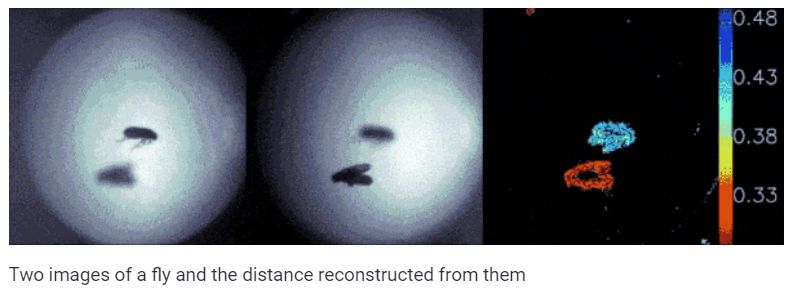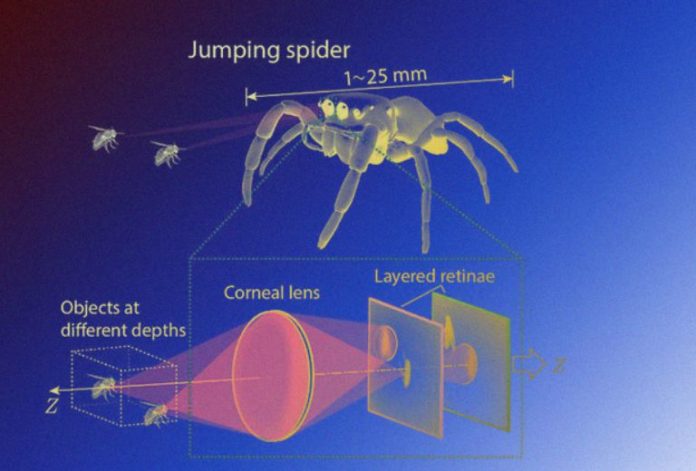A team of Scientists have created image depth sensors, the principle of which is similar to the natural perception of horse spiders and uses metal. The resulting tools are much smaller than the already used devices (for example, cameras in smartphones) and are suitable for installation on microbots.
A person feels the light with the help of the retina lining the eye from the inside. This organ is two-dimensional, therefore the image obtained with one eye is also “flat,” that is, it does not allow one to estimate the distance to objects without using additional information. The depth is perceived after processing by the brain of images from both eyes since their position provides different viewing angles, which is why the images of bodies near are displaced relative to background objects.
The human brain is complex and copes with the task of continuous image processing. However, some animals have a much more primitive nervous system and cannot allow this. For example, arthropods from the family of riding spiders also evaluate image depth for navigation and hunting. However, for this, they do not rely on the work of the brain, but on the special structure of the eyes, which allows you to automatically solve the desired problem.
All the main eyes of these spiders have several translucent layers of the retina, which perceive the image of varying degrees of blur. The differences between these pictures help to restore information about the distance to objects in the field of view. In the field of image processing, such a post-focus algorithm is called Depth From Defocus, and it is already used in some commercial products.
Scientists from Singapore and the United States, led by Federico Capasso from Harvard University, have created a compact depth sensor that works according to principles similar to the visual system of horse spiders. The main difference between the new development and the previous ones is the use of metalides, that is, microstructured surfaces that provide modes of interaction with radiation that are unattainable for traditional optics. This made it possible to get rid of the moving parts of the device, due to which it was possible to radically reduce the size of the optical system.

When light passes through the metalization created by the researchers with a diameter of 3 millimetres, the beam is divided into two parts, which project images of varying degrees of blurriness onto neighbouring sections of the photodetector. Scientists have also developed a new algorithm that calculates depth by comparing the resulting images, performing less than 700 floating-point operations for each pixel of the output signal, which is about 10 times less than binocular data stream processing programs. The sensor’s working distance is 10 centimetres; depth estimation is possible based on a single frame.
Scientists note that at the current stage the development is imperfect. In particular, it is characterized by certain problems of the optical system of horse spiders, such as light sensitivity, limited spectral range, and a small field of view. However, these shortcomings can be overcome by applying metallises of a more complex structure. In general, scientists believe the invention is applicable in the field of creating microrobots, as well as swallowed or wearable devices.
